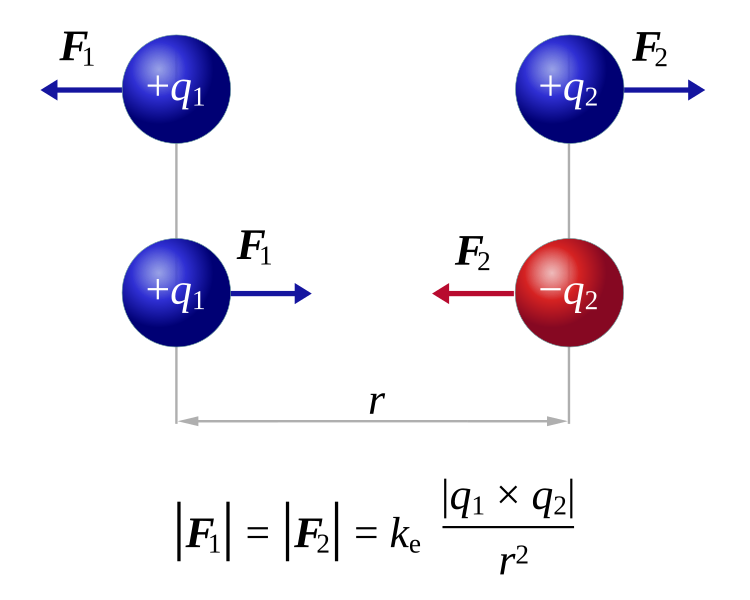
Caption: A diagram illustrating the electric force (AKA the Coulomb's law force) between point particle electical charges or, by the shell theorem, spherically symmetric electical charges.
Features:
- Coulomb's law itself in
absolute value form
is displayed in the diagram.
In vector form,
Coulomb's law explicitly
obeys
Newton's 3rd law of motion:
for every
force there is an equal
(in magnitude)
and opposite (in direction)
force.
- The q_1 and q_2 are
positive charges.
The -q_2 is a
negative charge.
In the metric system,
the electical charges are
measured in the units
of coulombs (C).
The separation distance r in the metric system is measured in meters, of course.
- Coulomb's constant
k=8.9875517873681764*10**9 N-m**2/C**2 (exact).
Coulomb's constant
is an exact value due to the way modern
metric system units are defined.
- The electric force is an
inverse-square law force---as shown by that
1/r**2 factor in Coulomb's law.
The inverse-square law force
1/r**2 behavior makes the
electric force
intrinsically a
long range force
because it only goes to zero at r = ∞.
Of course, the electric force in many situations becomes effectively a short range force (often a contact force) due the large-scale or macroscopic cancellation or near cancellation of positive charge and negative charge.
- The direction of the electric force
between charged particles
can be determined from the
mnemonic:
likes repel, unlikes attract.
The mnemonic is illustrated by the
diagram.
Image link: Wikimedia Commons: File:CoulombsLaw.svg.
Local file: local link: electric_force_coulombs_law.html.
File: Electromagnetism file: electric_force_coulombs_law.html.